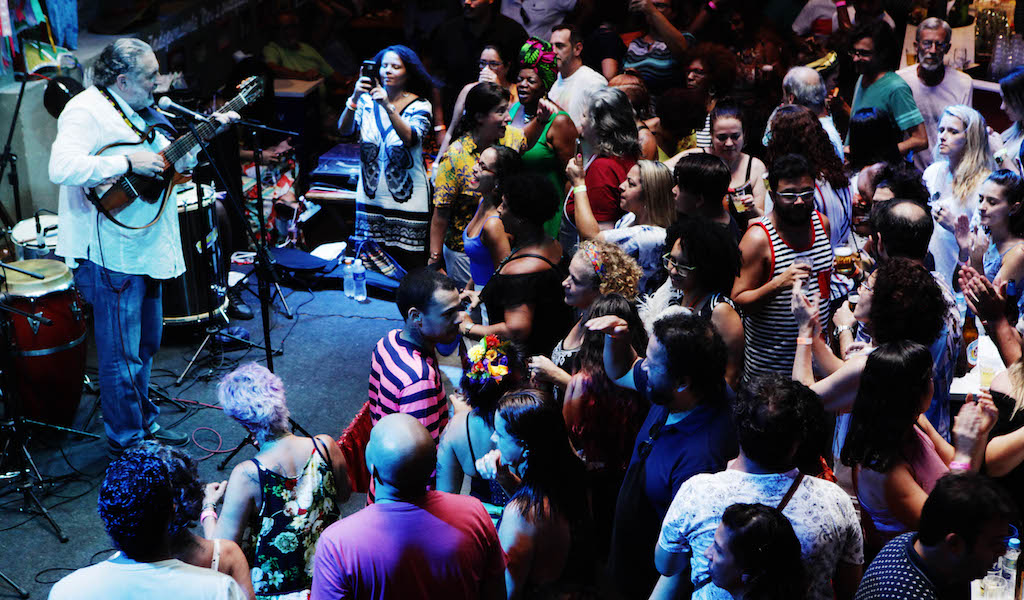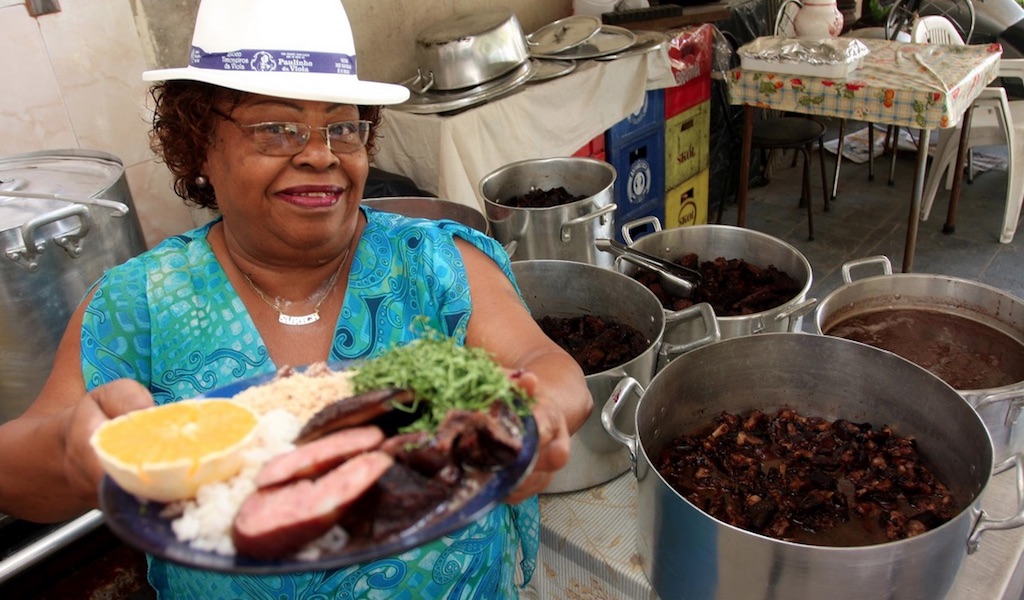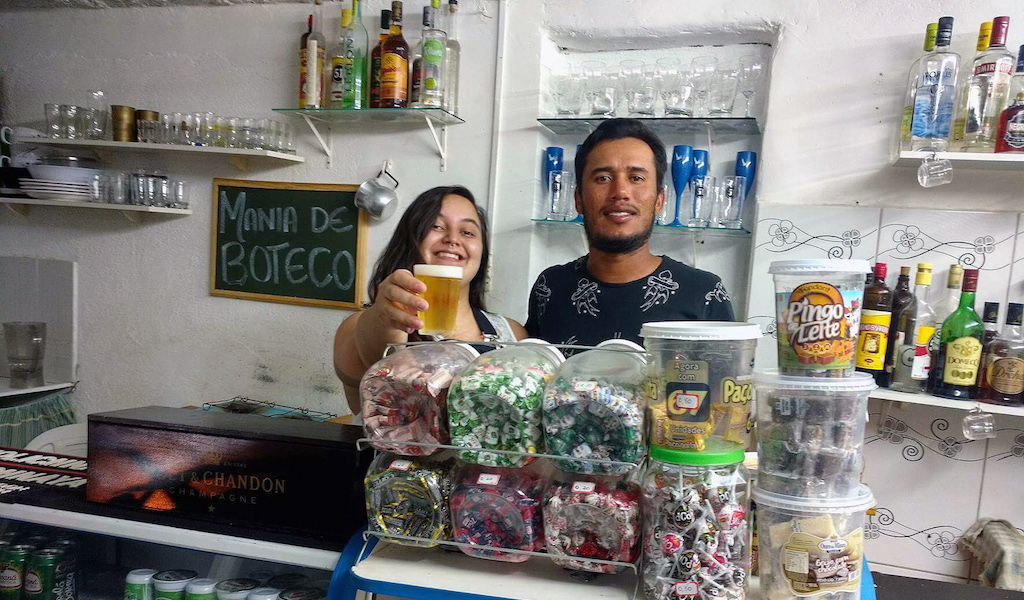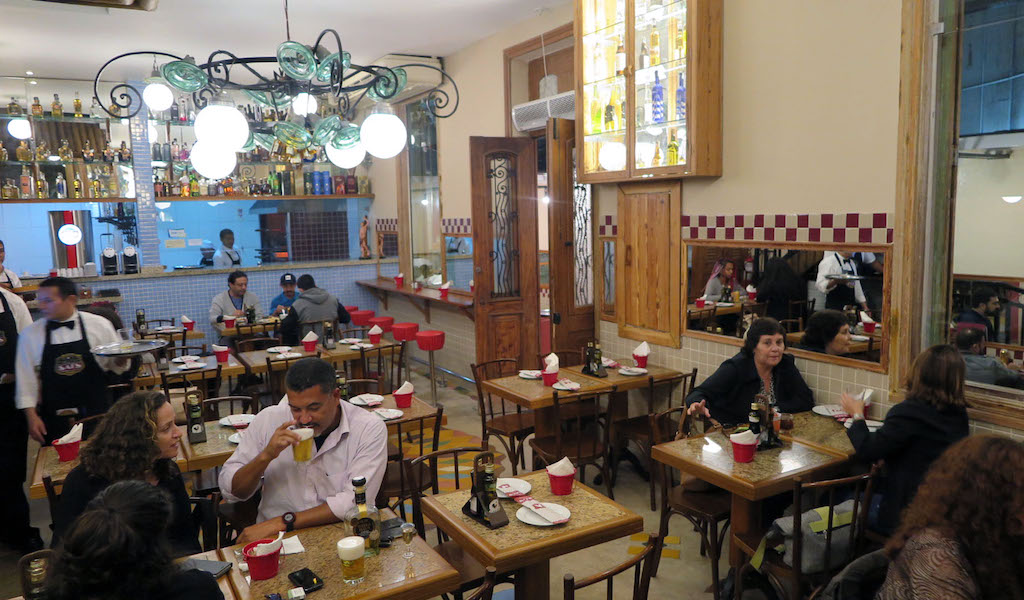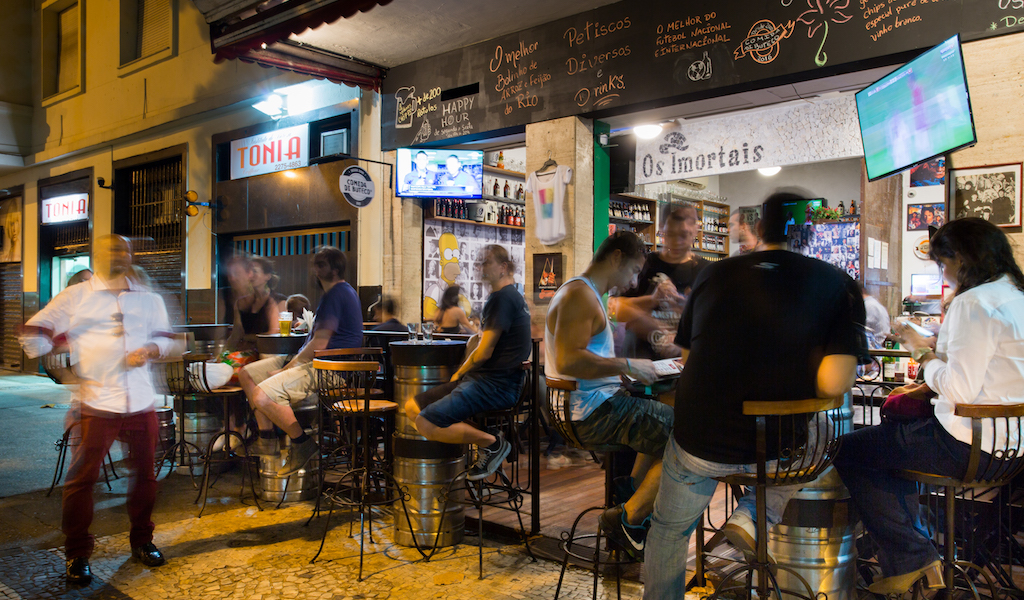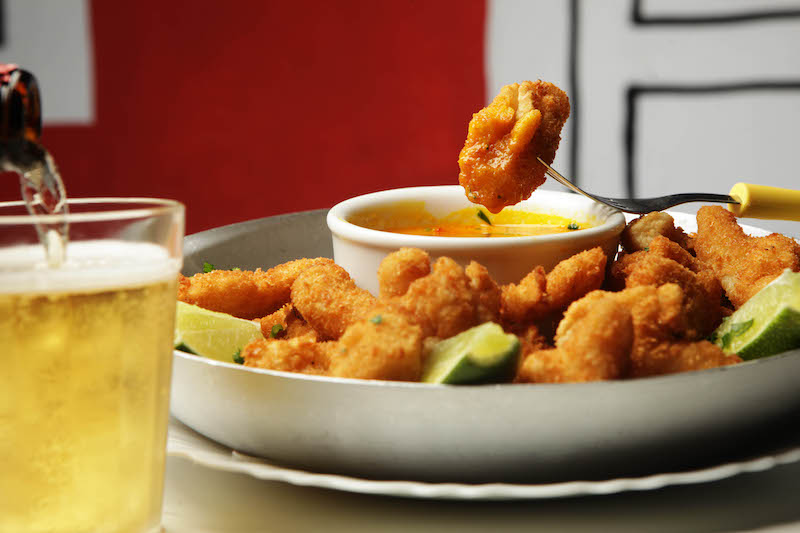We can't find the internet
Attempting to reconnect
Something went wrong!
Hang in there while we get back on track
Search results for "Juarez Becoza"
Rio
Põe na Quentinha: The Edible Samba Parade
When it first began five years ago, Põe na Quentinha was an informal get-together for people who were equally passionate about food, beer and samba; they spent the day eating, drinking and dancing in preparation for Carnival. Fast-forward to 2017, when what had now developed into a proper street parade drew in over 5,000 people over three different days during the Carnival Season. This year, the food-focused event, the only one of its kind in Rio, is even larger, hosting a full month-long schedule of parades that started in mid-January.
Read moreRio
Beans & Beats: Pre-Gaming Carnival 2018
There’s one thing about Rio’s gastronomy that just about everyone can agree on: feijoada, the glorious black bean and pork stew served with cabbage, toasted manioc flour, rice and oranges, can (and should be) eaten all year long. But during the Carnival season (a non-specified period that begins in early January and extends until one week after the Carnival holidays), the Brazilian national dish becomes the official meal of all parties and events. From Friday to Sunday, feijoada is everywhere – at samba schools, bars, restaurants, fancy hotels, and even on the streets – and almost always accompanied by samba. This year is no different. The feijoada season has already begun, and the agenda is packed until Carnival, which in 2018 runs from February 10-14.
Read moreRio
Mania de Boteco: A Bar in the Sky
It’s not easy to get to Mania de Boteco. You have to go up, up, up, first by car (or, for something more thrilling, on the back of a motorcycle taxi) and then by foot, cutting across alleys and climbing narrow stairwells. But this spot is worth all the effort. Tiny and humble, Mania de Boteco has an almost improvised feel to it, teetering at the top of Vidigal, one of Rio’s most scenic favelas. The first thing noticed here is the astonishing view of the ocean and Leblon and Ipanema beaches down below. But Mania de Boteco is more than just a scenic spot: it also happens to be a top-notch botequim serving wonderful food and amazingly good drinks.
Read moreRio
Best Bites 2017: Rio de Janeiro
Brazil’s economic crisis has hit Rio hard this past year, and the culinary scene was by no means immune from the downturn. Some famous restaurants and bars closed their doors for good. But the city hasn’t given up. In fact, if some doors have closed, a lot more have opened. Because now creativity is being used as a weapon against the crisis, and not only at newly opened spots. Established bars and restaurants have been reinvigorated with new ideas and processes. In this atmosphere, many exciting culinary novelties have made their way to the streets, ready for us to indulge in, all without having to spend too much money. So my best bites of 2017 reflect this abundance of good and cheap novel eats that have become so popular in these leaner times.
Read moreRio
Os Imortais: The Born-Again Botequim
There’s a new phenomenon in Rio’s botequim scene. Until some years ago, running one of these small bars was something done exclusively by immigrants from Portugal, Spain and Brazil’s northeast. But ever since botequims became extremely popular among the carioca middle class, new players have gotten into the business: the customers themselves. Since the beginning of the 21st century, it has become more and more common to hear about botequim customers who decided to buy the bars they used to frequent. Initially, it might be to help the former owners and to keep the bar from closing due to financial problems. But then they might notice that running a botequim in Rio can be enjoyable – and also good business, if the job is well done.
Read moreRio
Baródromo: Year-Round Carnival
Carnival in Rio is one of the world’s best parties, and for good reason. There are the extravagant costumes, the sweaty entertainers and revelers dancing to roaring samba music, and, most importantly, free flowing alcohol: Public inebriation, whether from drinking cheap beer or slurping spiked popsicles, is heavily encouraged. While nothing can top this pre-Lent bash, a newly reopened entertainment temple in Lapa offers a Carnival-like experience year-round. At Baródromo, you can soak in the Carnival ambience while downing delicious beers, eating well and listening to the best samba music out there.
Read more